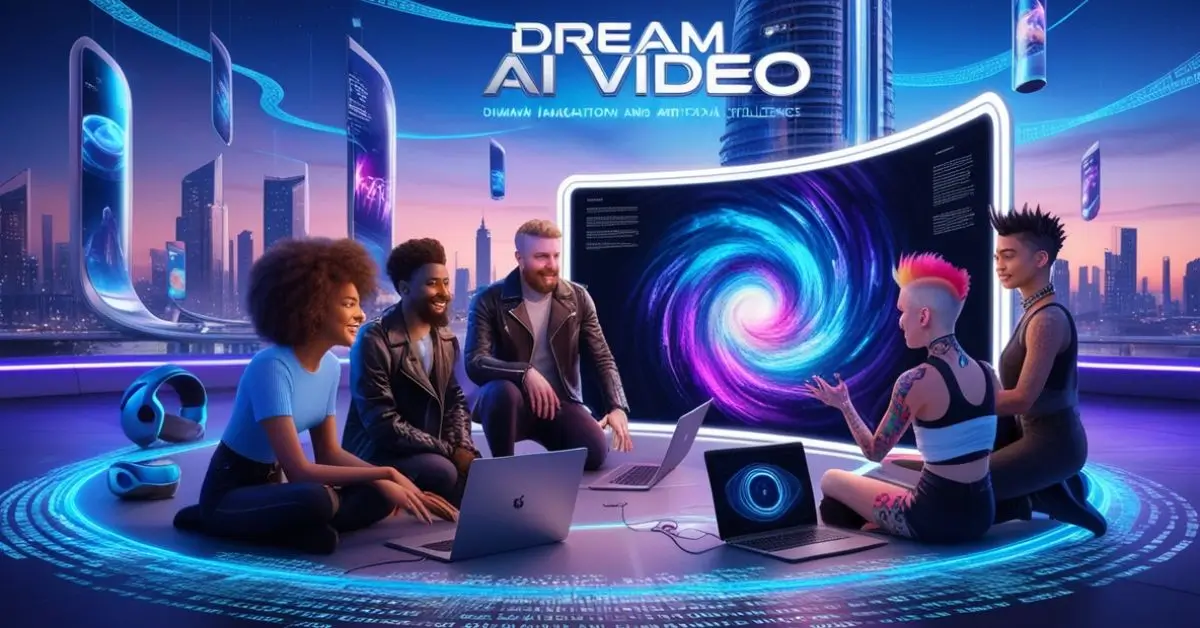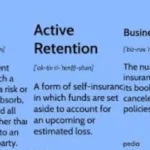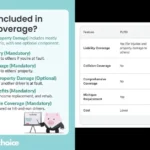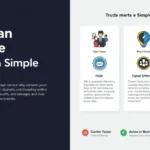The digital age has seen transformative technological leaps in content creation, especially with the integration of artificial intelligence (AI). Among the cutting-edge advancements, Dream AI Video stands out as a revolutionary tool that blends imagination and technology, enabling the generation of visually stunning, dreamlike video content. This article explores the mechanisms behind Dream AI Video, its applications across various industries, and the potential it holds for reshaping visual storytelling.
Understanding Dream AI Video Technology
Dream AI Video represents an innovative use of AI to create videos with surreal or hyper-creative visuals. It combines advanced neural networks, deep learning, and generative models to produce unique video content, often inspired by a user’s creative prompts. This technology allows the production of vivid, sometimes fantastical visual effects that were previously achievable only with high-budget CGI or extensive manual editing.
- Generative Adversarial Networks (GANs): GANs are central to Dream AI Video creation. They work through a process where two neural networks (a generator and a discriminator) compete, with the generator producing visuals and the discriminator assessing them for realism. Over time, the generator improves, producing increasingly realistic or stylized images that can be sequenced into video.
- Deep Learning and Neural Networks: The foundation of Dream AI Video relies on neural networks trained on extensive image datasets. These networks learn visual patterns, colors, textures, and forms, which they use to generate new content based on user input. Deep learning enables AI to “understand” aesthetics, making it possible to craft video scenes that convey specific moods or themes.
- Text-to-Video Generation: With advancements in natural language processing (NLP), AI models can now convert text prompts into video. Users provide a description of what they want to see, and the AI interprets it to create a sequence of images or animations. This capability makes Dream AI Video accessible to creators with minimal technical knowledge.
- Popular Platforms: AI-driven video generation tools are becoming increasingly available. Platforms like Runway, Synthesia, and others allow users to create customized videos with relative ease, adding effects, changing colors, and generating themes based on their unique creative visions.
The Process of Creating Dream AI Videos
- Training the AI Models: Creating a Dream AI Video begins with training AI models on large datasets. These datasets might contain millions of images across different styles, colors, and themes, which enable the model to learn how to recreate similar visuals.
- Video Generation: The user starts by inputting text prompts, keywords, or even uploading images to guide the visual themes. Once provided, the AI generates individual frames that seamlessly transition into a full video. The process is typically fast, and users can iterate with different prompts to refine the look.
- Editing and Enhancements: Dream AI platforms often include editing tools, allowing creators to fine-tune elements like color schemes, contrast, and transitions. Users can then modify the generated video to align it with a specific vision, creating high-quality outputs that suit professional needs.
Applications of Dream AI Videos
Dream AI Video has a broad spectrum of applications across industries, each leveraging the technology to push creative boundaries.
- Marketing and Advertising: Brands are using AI-generated videos to produce captivating ads with unique visuals that stand out on social media and digital platforms. AI allows companies to create personalized video ads that appeal directly to specific audience segments, improving engagement rates and brand recall.
- Entertainment and Music Videos: Musicians and filmmakers are exploring Dream AI Video to bring otherworldly or surreal visual effects into their productions. AI-generated visuals can accompany music in entirely new ways, creating an immersive experience that resonates deeply with audiences. The relatively low cost and speed of AI video production also open doors for independent artists to create high-quality visual content.
- Education and Training: Educational institutions and companies can use Dream AI Video to create visual content that explains complex concepts. For example, an AI-generated video could visualize abstract ideas in science, technology, or art, helping students or trainees understand topics more clearly and memorably.
- Social Media Content Creation: Influencers and digital content creators are increasingly turning to AI-generated videos to stand out on platforms like Instagram, TikTok, and YouTube. The ability to produce eye-catching, dreamlike visuals helps capture viewers’ attention, which is crucial in a content-saturated environment.
- Virtual Reality (VR) and Augmented Reality (AR): Dream AI Video can be integrated with VR and AR, creating fully immersive environments for users. By generating unique, dreamlike settings, AI can elevate the VR experience, allowing users to interact with fantastical worlds that are both hyper-realistic and imaginative.
Advantages of Using Dream AI Video
- Efficiency and Cost Reduction: Dream AI Video technology minimizes the need for large production crews, special effects teams, and extensive post-production work. Small businesses and independent creators can produce professional-quality videos without major budgets.
- Creative Freedom and Innovation: Dream AI Video expands the realm of what’s possible, empowering creators to push their artistic boundaries. This technology allows for the creation of surreal, impossible visuals that can convey abstract ideas, emotions, or concepts that traditional filming techniques may not achieve.
- Enhanced Personalization: AI video generation enables high levels of customization, making it possible to tailor videos to the unique preferences of each viewer. Brands and creators can leverage this personalization to deliver more engaging and impactful experiences.
Ethical and Practical Challenges
While Dream AI Video offers significant benefits, it also presents ethical and practical challenges.
- Copyright and Plagiarism Concerns: AI-generated videos often raise questions about originality and ownership. Since AI models learn from vast datasets, including content created by other artists, it’s essential to ensure that AI does not inadvertently replicate copyrighted materials.
- Quality Control and Authenticity: While AI is proficient in generating high-quality visuals, maintaining consistency and realism across a video can be challenging. Some AI-generated videos may appear uncanny or fail to match the desired realism, which may limit their application for certain professional needs.
- Misuse Potential: AI’s ability to create hyper-realistic visuals raises concerns about misuse. For example, deepfake technology can create videos of real individuals saying or doing things they never actually did, potentially leading to misinformation or privacy issues.
- Environmental Impact: Training AI models requires substantial computational power, which consumes a significant amount of energy. The environmental impact of AI-based content creation must be taken into account, and researchers are exploring ways to make AI processing more energy-efficient.
The Future of Dream AI Video
The potential of Dream AI Video is immense, and its impact on content creation and visual storytelling is likely to grow in the coming years.
- Technological Advancements: AI and machine learning will continue to evolve, making Dream AI Video more sophisticated. Future iterations will likely improve in generating complex scenes, rendering realistic lighting and textures, and even simulating realistic movement and gestures.
- Expanding Applications: As AI video technology becomes more accessible, we may see it adopted in new fields. For example, personalized cinema experiences could become possible, where movies are generated based on the viewer’s preferences, or interactive storytelling in gaming could incorporate dreamlike AI-generated worlds.
- Balancing Innovation and Ethics: The industry will need to establish guidelines to manage the ethical considerations around Dream AI Video. Transparent data usage, copyright protections, and clear boundaries for AI’s application in media are essential to maintain public trust and responsible usage.
Conclusion
Dream AI Video represents a convergence of technology and artistry that has the potential to revolutionize visual storytelling across industries. By enabling creators to bring their imaginative visions to life with minimal resources, Dream AI Video technology empowers a new wave of creative expression. However, as with any groundbreaking technology, it’s essential to consider the ethical and practical challenges to ensure its positive impact on society. With responsible development and usage, Dream AI Video will likely become a foundational tool in the future of media, education, marketing, and beyond.











